We are the Schuyler Sisters
This summer, four brave undergraduates and one faculty advisor are dedicated to both geologic research and honoring the sensational Broadway musical Hamilton. You may be wondering what roads led to such an interesting intersection. The answer is simple as the William & Mary Structural Geology & Tectonics research group has a grant from the U.S. Geological Survey to produce a geologic map of the Schuyler 7.5-minute quadrangle in central Virginia. If you are a member of the “Familton” (the designation for people who have an oddly intense fascination with the Hamilton musical and its many catchy tunes) you will remember the name Schuyler (pronounced sky-ler) which plays a significant role in the story. The Schuyler sisters were the daughters of General Schuyler: Angelica, Eliza, and Peggy. Eliza ends up bewifing Alexander Hamilton himself. Our band of ‘sisters’ includes Katie Cullen, Bel Liscomb, Haley Meyrowitz, and Terri Zach — all advised by the newly nick-named faculty proprietor, Chunky Bailey (a.k.a.- Buck Chailey).
The Schuyler 7.5-minute quadrangle is named for the most prominent town within the quadrangle — Schuyler, with a current population of ~250. In the early 20th-century, the town was a booming industrial center that was the capital of the American soapstone industry. In its heyday, more than 1,500 people were employed in the quarries and mill. Schuyler also served as the backdrop for a well-known dramatic historical TV series – The Waltons – which aired way back in the 1970s (well before our time). Soapstone is still quarried in modest quantities from the Schuyler area by Polycor, a Canadian-American-French company, and used as dimension stone for high-end architectural purposes. The origin of soapstone has puzzled geologists for more than a century and one of our research goals is to determine the age and origin of these enigmatic rocks.
The landscape in the Schuyler area is hard not to love — with ample views of the Blue Ridge foothills to the meandering Rockfish River, from ivy-covered stained-glass churches to iconic old quarries — there is much to see. The character of the landscape is a reflection of the underlying bedrock and its structural geometry. Our job is to map out the geology, discern the underlying crustal architecture, and develop a narrative for the region’s geological history.
Each of the Sisters is also working to answer a specific geological question that forms the core of our thesis research. Additionally, we’re collaborating with U.S. Geological Survey scientists to develop a new method for using a portable Raman spectrometer in the field. We’re analyzing graphite, a minor mineral in some rocks from the Schuyler area; spectroscopy enables us to determine the maximum temperatures the graphite/host rocks enjoyed during deformation and metamorphism.
Our summer experience will be split between field work in the Schuyler area and lab work in The Cave (a.k.a.- the room where it happens – Room 208 McGlothlin-Street Hall @ William & Mary in Williamsburg). By summer’s end, we hope to walk away from this experience with nourished minds, proud farmer’s tans, budding romances for our frat-boy themed rock hammers, and many kilograms of rocks for further study during the academic year.
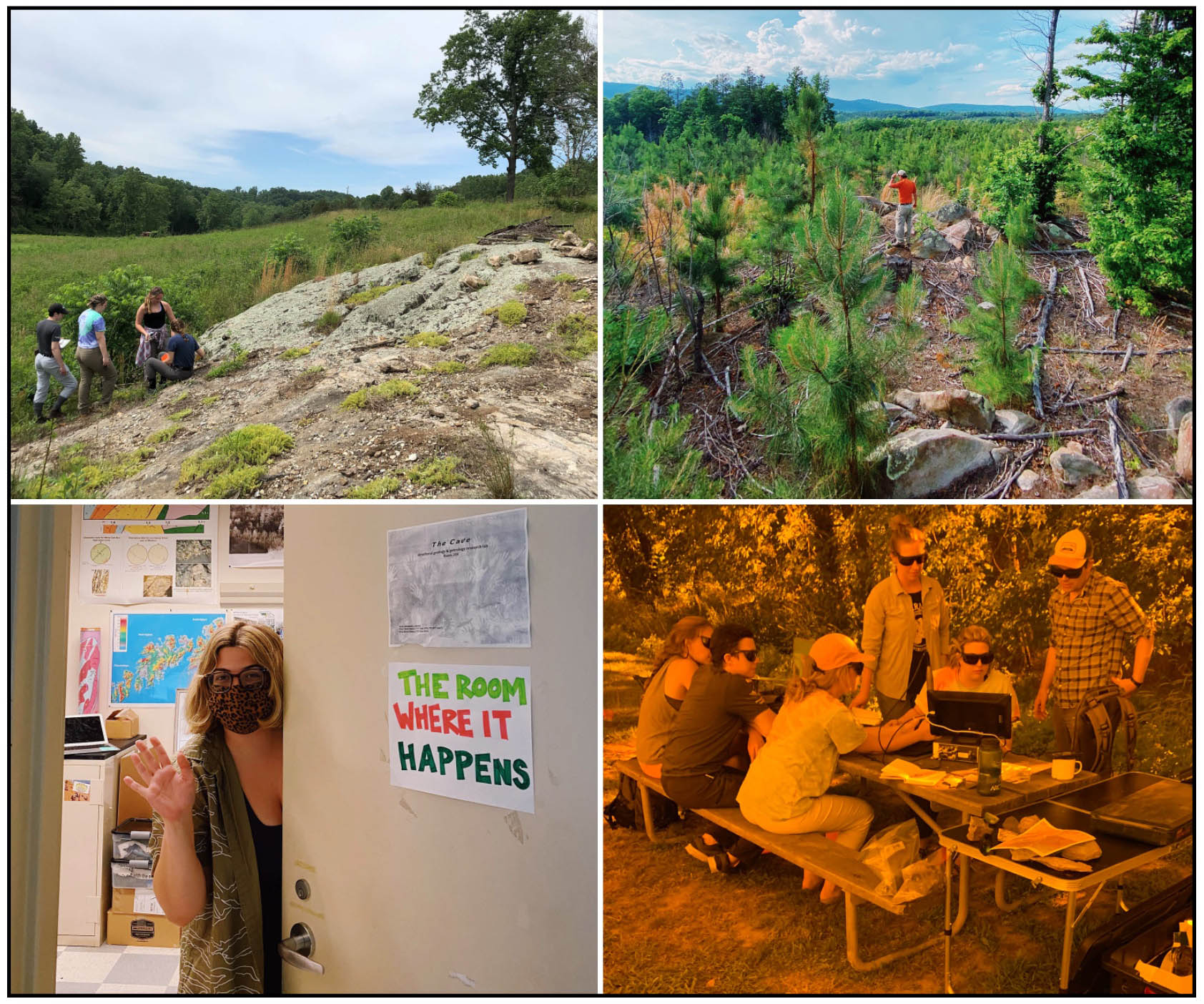
Top left: The Schuyler Sisters on a ‘whaleback’ outcrop of biotite-bearing granitoid gneiss. Top right: Chuck Bailey standing on an outcrop in a clear cut near Bungletown. Bottom left: Schuyler Sister Haley showing off the room where it happens. Bottom right: The Schuyler Sisters and our U.S. Geological Survey collaborators Rebecca Stokes and Aaron Judd using the portable Raman spectrometer at base camp. The orange hue is the view from the safety glasses that we wear while using the laser.
Terri Zach
As Chuck Bailey often notes “geology is a found major” and my academic journey attests to that. In 2017, on a whim, I took a geology course to earn science credits for my Associate’s degree at Thomas Nelson Community College. What I quickly realized is how much love I had for this science. My geology professor Lynsey LeMay (a W&M double alumna ’02 & ’07) invited me and other students to attend the 2017 Geological Society of America Southeastern Section Meeting. At this conference, I saw research presentations delivered by William & Mary undergraduates and realized that was exactly what I wanted to do. I transferred to William & Mary in the Fall 2019 and earlier this year completed my Honors research on the mysterious Shores Mélange. With the Schuyler Sisters, I am mapping the northwest corner of the quadrangle and investigating the contact between one billion-year-old basement rocks and a cover sequence of younger meta-sedimentary rocks.
Katie Cullen
Like Terri noted, geology tends to find each of us majors in a strange and unpredictable way. I came to William & Mary from Little Rock, Arkansas — not knowing many people, and set on being a physics major. I ended up in one of the introductory geology seminars after not getting into any of the classes I wanted…. and from there I was hooked. It seemed like a major that could combine my budding interest in time spent outdoors, a passion for environmental advocacy, and mentorship from a group of the coolest professors I had ever known (here’s to hoping that no one’s head gets too big from this comment). I am now a bit further down the road in my college career and have been fully adopted into the unmatched community of support and love that is the W&M Geology department. In addition to mapping the northeast corner of the quadrangle, my thesis work will be dedicated to drawing restorable geological cross sections of the underlying structure within Lynchburg Group — a metasedimentary sequence of rocks in the Blue Ridge with some interesting structural features (in many places these rocks are tilted completely onto their side — that is, the layering is vertical!). I am also hoping to turn what I learn into 3D models rendered over a series of time steps.
Haley Meyrowitz
Unlike my fellow Schuyler Sisters, I entered college determined to be a geology major. My interest piqued in my ninth-grade Earth Science class at Carle Place High School (shoutout to Mr. Bounpane). At the end of my first year at William & Mary, I took a regional field geology course in California, that trip was probably the most impactful experience I have had as a college student and it affirmed that my decision to be a geology major was the right one. My love of maps and mapping came a little later in the form of a history of cartography course entitled “Writing the World in Images” as well as in the Introductory GIS class. I am mapping the southeast corner of the quadrangle, heading up our outreach efforts, and running our lab’s TikTok account. Check out our page and see fun facts, special guests, and more. My thesis work seeks to resolve differing interpretations as to the origin of the youngest strata in the Lynchburg Group and their contact relationship to the overlying Catoctin Formation.
Bel Liscomb
If you asked the 18-year-old me what she was considering majoring in at W&M, geology wouldn’t have made the list. I knew I wanted to be in STEM, but I was torn between chemistry and biology; eventually I just flipped a coin and went with chemistry. I guess the universe decided to intervene because I somehow ended up with Chuck Bailey as my pre-major advisor, who talked me into taking the Geological Evolution of Virginia course my second semester. It was there that I realized that geology is a field that combines my love for exploring the outdoors with a wide range of STEM disciplines including chemistry, GIS, and physics. Now I can’t imagine my future without geology in it, and I am so excited to be a part of the Schuyler Sisters for my final year here. I am mapping the southwest corner of the quadrangle, and my thesis is focused on the genesis of the region’s mafic-ultramafic complex. Soapstone is an altered ultramafic rock that was once extensively quarried in Virginia. Polycor recently drilled thousands of feet of rock core as part of an exploration project to locate the best/highest quality soapstone. My research will use these cores to determine the age and origin of the mafic-ultramafic rock bodies in Schuyler.
We’re the Geo Schuyler Sisters
We’re looking for a mind at work
We’re not throwing away our shot!
We’ll be back later this summer to report on our progress. Until then, be sure to think of the Schuyler Sisters every time you play that Hamilton Spotify playlist or crack open a Blue Ridge local-brewery cider. There’s a million things we haven’t done, just you wait.
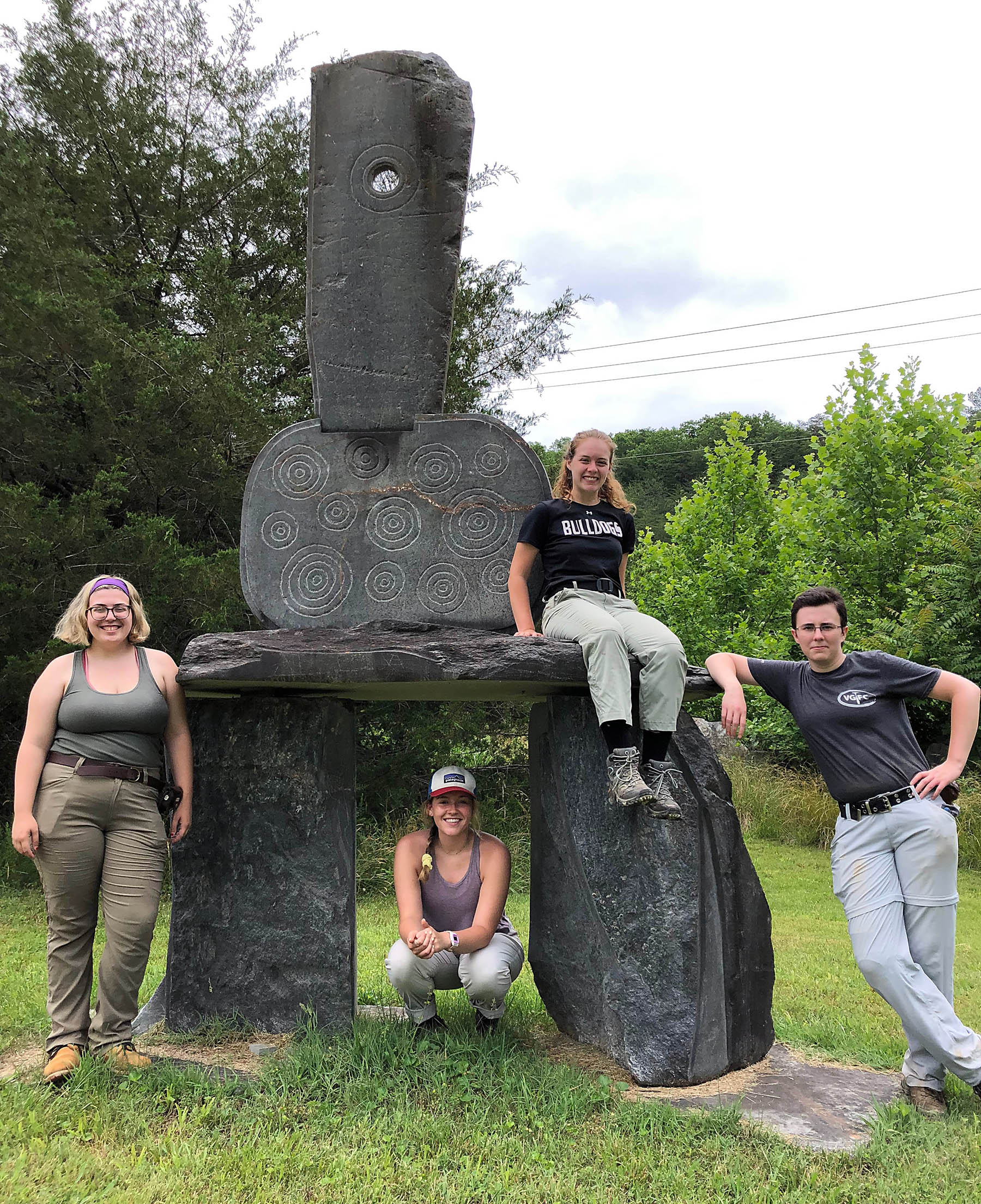
The Schuyler Sisters among a soapstone sculpture at Schuyler. From left to right: Haley, Katie, Bel, Terri.
Comments are currently closed. Comments are closed on all posts older than one year, and for those in our archive.

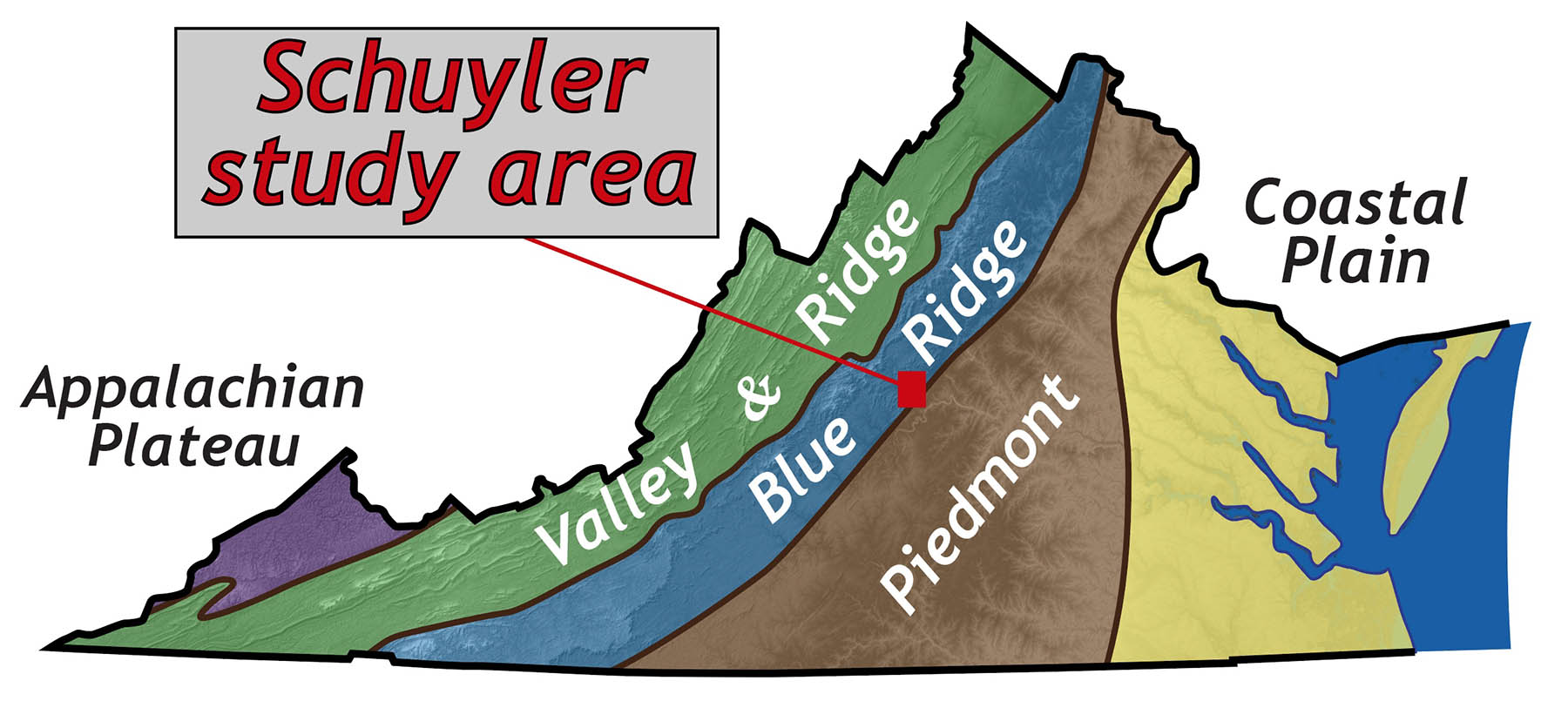
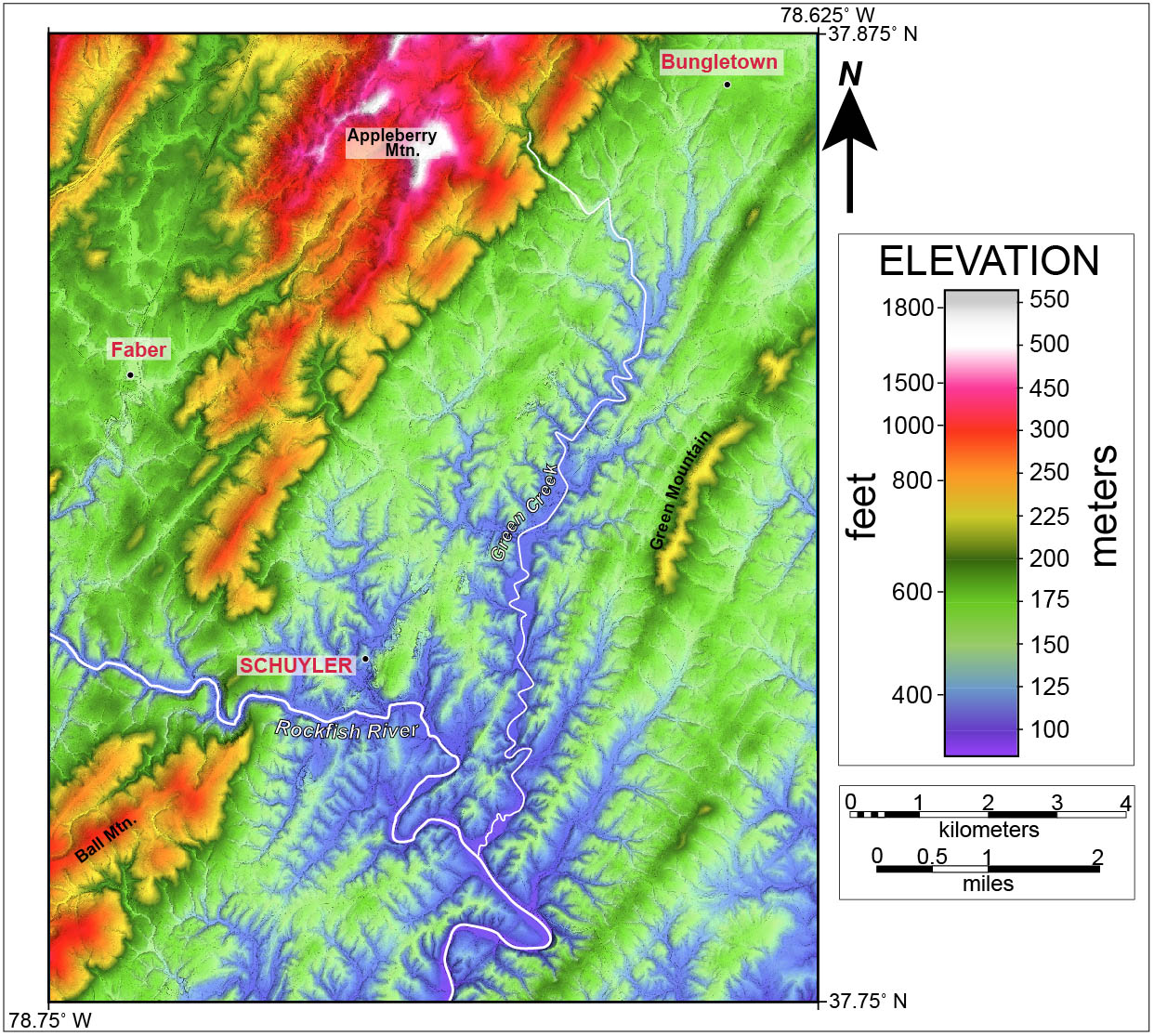
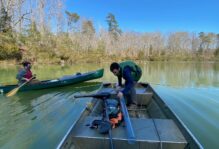
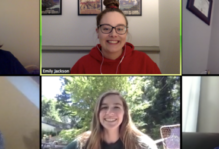
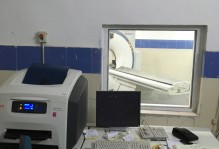
Woah this is so cool. You guys are living the dream this summer!
To be in Schuyler again! Looks like you all are doing some really cool stuff! Can’t wait to hear all about it at Senior Research Saturday in the spring
What a cool project! I’m excited to see the ways you all communicate this research!
What an amazing project! Wonderful how they each have their own research focuses while working together so productively. I can see why they have a grant, I’d fund them too (if I had money). Good luck, Schuyler Sisters!
Can’t wait to see Katie’s 3D model of her part’s time progression! This whole project is super interesting!
Awesome work!! So historical. Love Hamilton.
This is such an exciting project! I loved hearing from each member of the team, and best wishes with the rest of your research this summer.
So impressed with this project and the Fab Four! Also sounds like the prof is a gneiss; hope y’all don’t take him for granite.
I want to be in the room where it happens. Such cool research!
Sounds like a great project! I also can’t wait to here about Katie’s thesis!
🌳🍄🍃🐛🌎🍃🪨🌵
What great geologists! Rocks rock
In matters of science, curiosity gratified begets not indolence, but new desires. Good luck team.
I ❤️ rocks purely because of this post
Good to see Buck back out there in the field. You can’t ever keep him down. Can’t wait to see how this work contributes to the understanding of the Blue Ridge-Piedmont boundary.
So interesting! Looking forward to reading about Haley’s thesis and watching the tik toks she posts. Yay rocks!
Haley should be president
Super excited to read about what you guys do next! Good luck Schuyler Sisters!
Very Interesting, was in there at Walton Mt meusem Oct, 2021, wish I had known about the gardens and trails.